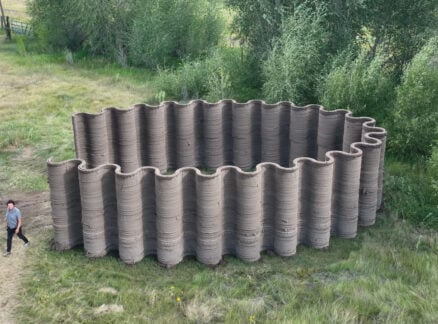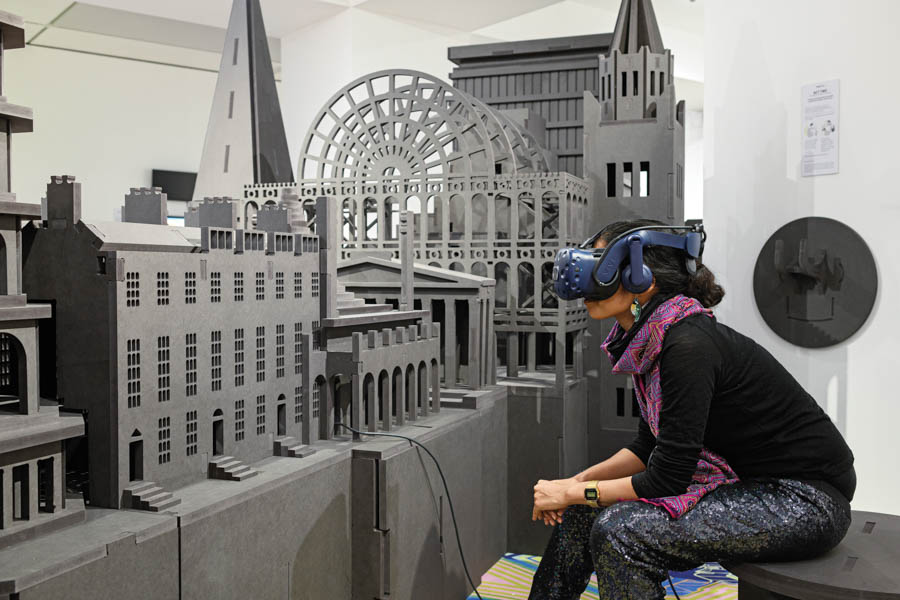
May 12, 2020
New Talent: Space Popular Mines the Distant Past and Imminent Future
The kaleidoscopic studio reflects upon the ways technology changes our relationship to the world, history, and one another.
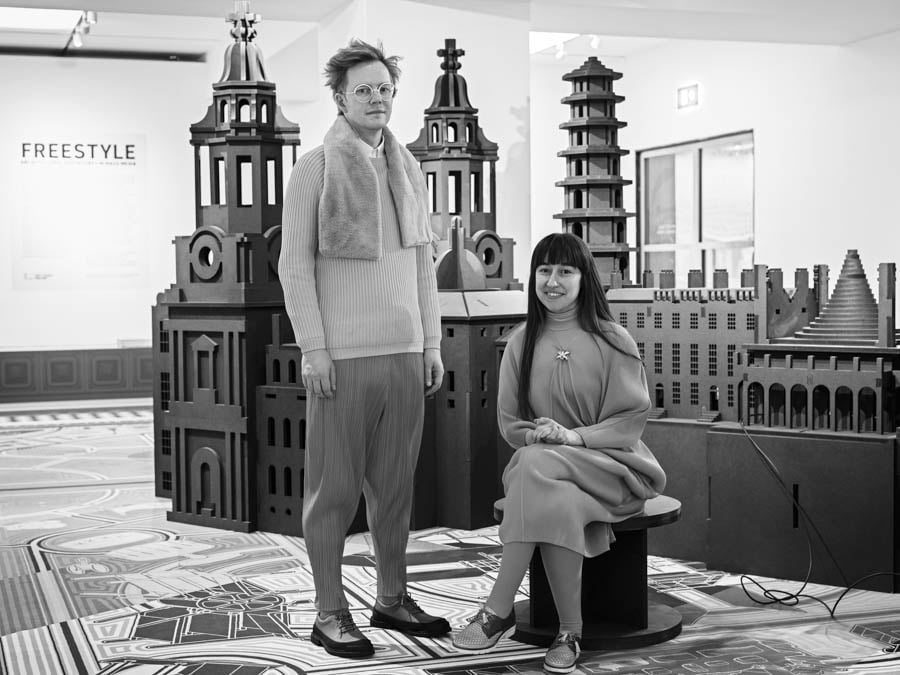
A mammoth matte black architectural model looms over a psychedelic carpet inside London’s Royal Institute of British Architects (RIBA). Like an exquisite corpse of London’s built history, its features flow across centuries of styles: Beginning with Christopher Wren’s baroque masterpiece of St. Paul’s Cathedral, it sprouts a Chinese-style Great Pagoda, erects the glass roof of the Crystal Palace alongside the Modernist slab of New Zealand House, and finally tops out with a Postmodern pumping station in the city’s East End. Donning a virtual reality (VR) headset, visitors can follow the model’s sassy gender-fluid resident manikin through time and space as it traces a 600-year history of architecture, technology, and style. Welcome to the weird, webbed world of Freestyle, RIBA’s current exhibition conceived by London-based design duo Space Popular.
“Style is democratized within virtual space,” explains Lara Lesmes, one half of Space Popular, over sesame noodles at their apartment in the Barbican Estate. “Since the dawn of the internet and digital connectivity, a language typically enjoyed by the few has become one for the many,” continues cofounder Fredrik Hellberg in a seemingly seamless manifesto. Decked out in gravity-defying, color-clashing Issey Miyake, Lesmes and Hellberg are every bit the Technicolor troubadours you’d expect to be heralding a digital revolution. But you’d be mistaken to think these designer architects haven’t also put their ideas to the test offscreen.
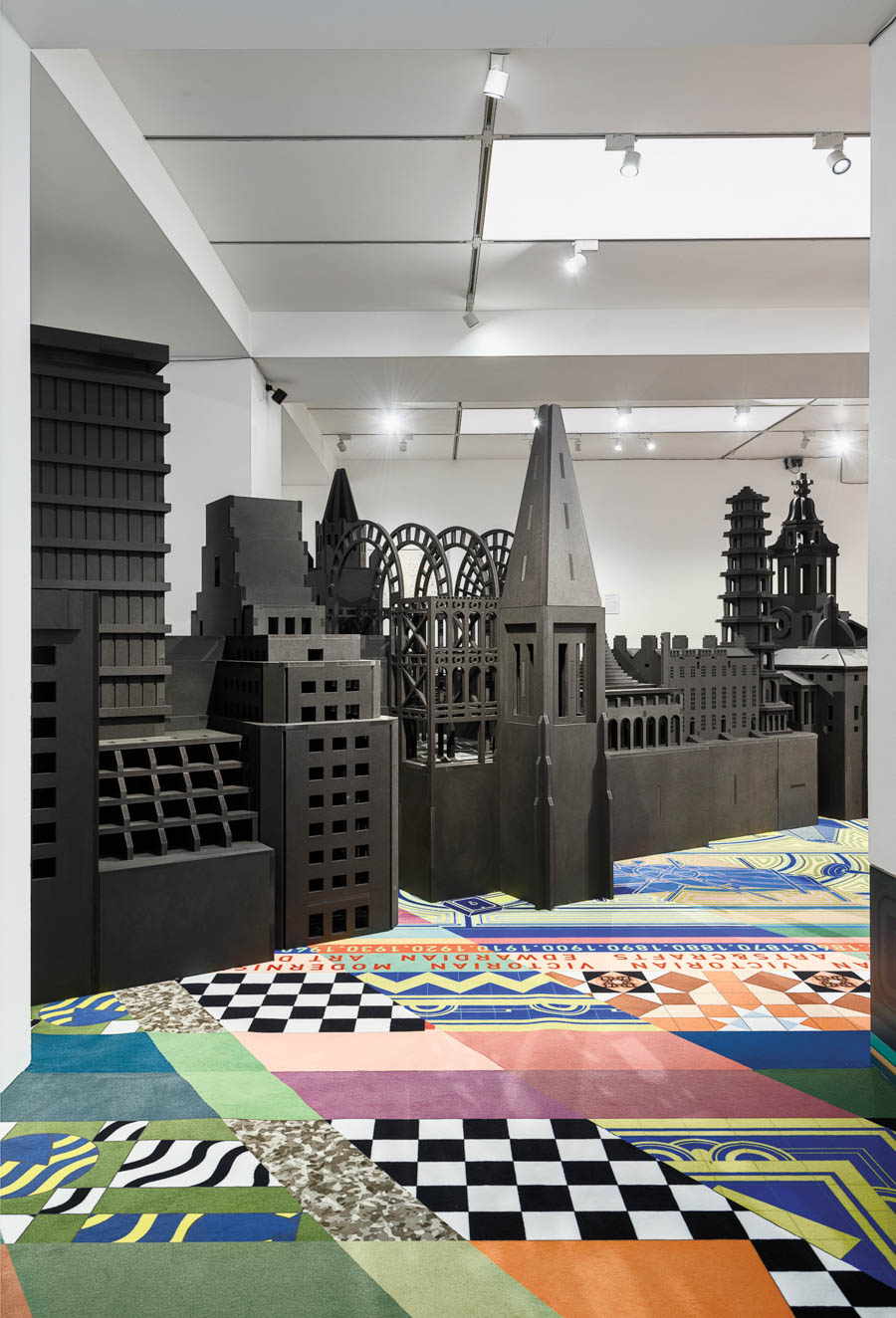
The pair is behind an eccentric addition to the quiet suburb of New Santa Bárbara, outside Valencia, Spain. Completed in late February, Lesmes and Hellberg’s jazzy Brick Vault House pops out from a gently sloping site, its collection of modular white cubes overlaid by a gargantuan green grid. The 32-foot-high, four-inch-thick steel frame traverses the house’s indoor and outdoor space, while pale-brick vaulted ceilings—laid by hand and without scaffolding, in the traditional Guastavino method—stitch together the sequence of open-plan rooms.
The house is a mishmash of architectural referents, caught somewhere between Continuous Monument redux and a children’s playpen. It also speaks wholly to Space Popular’s yen for irreverent, hypersensory, historically amalgamated design.
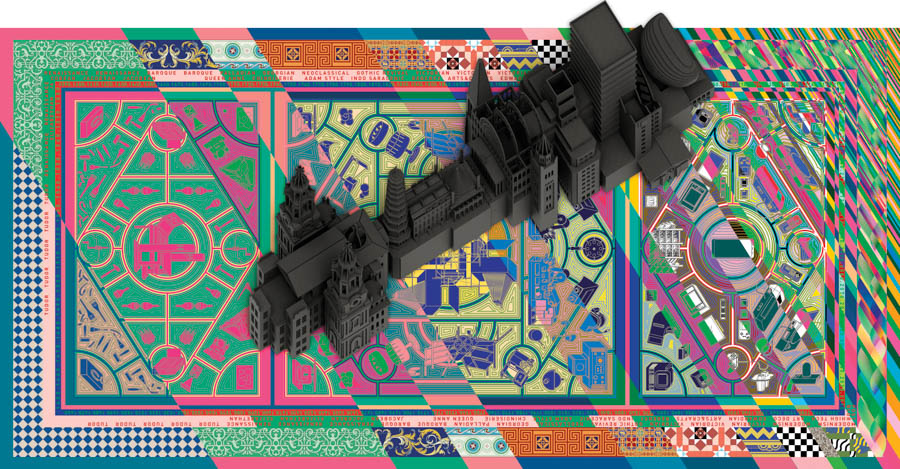
Lesmes and Hellberg met while studying at the Architectural Association (AA) in London, where they currently teach a research unit called Tools for Architecture. They founded their own practice in 2013 while living in Bangkok, and have since completed built projects, hosted workshops, and staged exhibitions across Europe and Asia. In the past seven years, Space Popular has garnered an international following for its kaleidoscopic style, which borrows freely from a treasure trove of influences: pastel-loving Postmodernism, the glitzy temple architecture of Thailand and South Korea, and critically, platforms that generate popular taste such as Instagram and Pinterest.
Using technology as its cipher, Space Popular mines the distant past and imminent future to interrogate the idea of style. Recent research projects have sent the pair to inventions of yesteryear, from the printing press to the Wardian Case (a 19th-century container for transporting rare plants), which they re-created in Milan’s sumptuous Palazzo Reale at last year’s Salone del Mobile. Meanwhile, the duo gave their students at the AA this year the lofty task of designing a new civic space using VR technology.

Other projects overlay past and future in one fell swoop. The Gate of Bright Lights, an immersive VR installation at Seoul’s Deoksugung Palace, considers the paradoxical history of gates—serving both as portals of popular taste and as an architecture of exclusion wielded by political and religious leaders.
Space Popular’s giddy optimism about a more democratic, connected, VR-enabled future underlies all of its investigations into a new virtual world, but it’s also under – pinned by a serious sense of responsibility. Value in the Virtual, a solo exhibition at Stockholm’s ArkDes in 2018 curated by James Taylor-Foster, drew on a Space Popular style manifesto for architects; a declaration titled “Ten Propositions for Virtual Architecture” accompanied the press release.
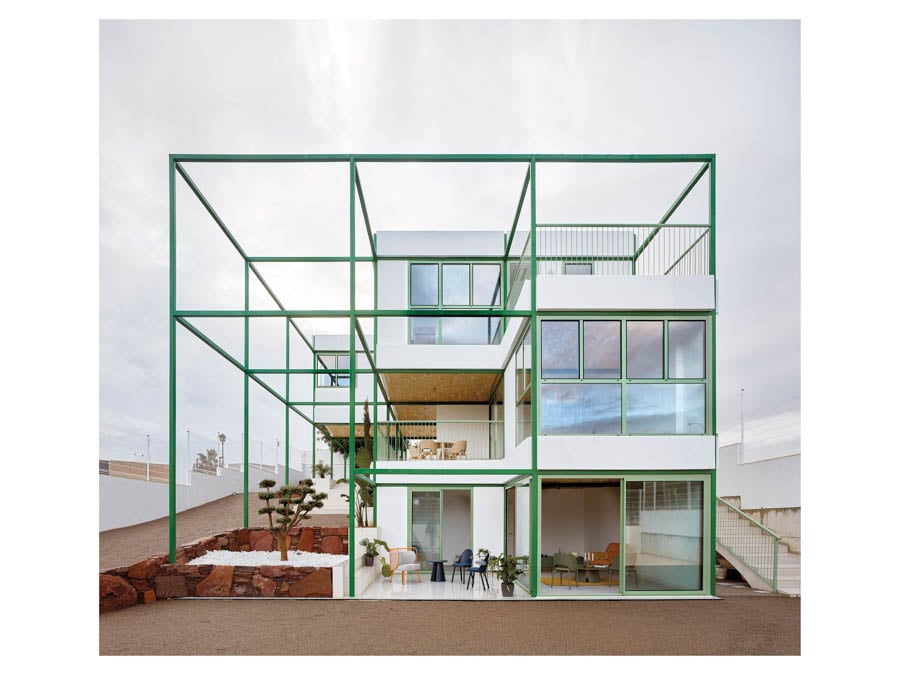
While fully manifested in Space Popular’s teaching and exhibitions, the duo’s commitment to the idea of a virtual civic realm is evident even in their daily life. “Most weeknights, we come home, strap on the headsets, and head into a virtual pub or club to chat with strangers,” explains Hellberg, who says he spends two or three hours daily hanging out in VR worlds like Second Life. Lesmes praises the purer form of self-expression enabled by digital avatars, rotating through a cast of characters based on her mood. If the duo’s tenth and final proposition—that “attire and architecture will blend into a continuous extension of the self”—comes to fruition, it appears Space Popular will be fully primed for the revolution.
You may also enjoy “New Talent: MUT Design Creates Furniture That Merges Play and Function.”
Would you like to comment on this article? Send your thoughts to: [email protected]









